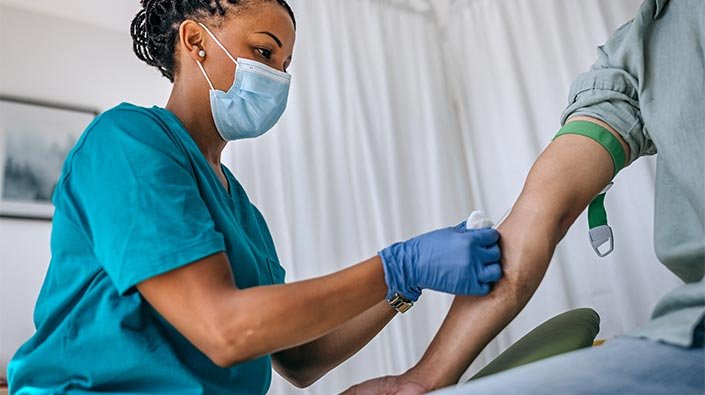The Importance of Hospital Supply and Equipment Management: Best Practices for Phlebotomy Equipment and Supplies
Summary
- Hospital supply and equipment management is crucial for ensuring the availability of quality Phlebotomy Equipment and supplies to support evolving techniques.
- Best practices include implementing inventory management systems, establishing vendor partnerships, and prioritizing staff training and education.
- Adopting evidence-based practices and technology can further enhance efficiency and minimize patient discomfort during phlebotomy procedures.
The Importance of Hospital Supply and Equipment Management
Hospital supply and equipment management play a critical role in ensuring the smooth operation of healthcare facilities and the delivery of quality patient care. In the context of phlebotomy, the process of drawing blood for diagnostic testing or medical procedures, having reliable access to necessary supplies and equipment is essential for Healthcare Providers to perform their duties effectively. Proper management of Phlebotomy Equipment and supplies not only supports the healthcare team in delivering accurate and timely Test Results but also helps in minimizing patient discomfort during procedures. Therefore, it is essential for hospitals to adopt best practices in Supply Chain management to ensure the availability of quality Phlebotomy Equipment and supplies.
Implementing Inventory Management Systems
One of the key best practices in hospital supply and equipment management is the implementation of efficient inventory management systems. These systems help hospitals track their supplies, monitor usage patterns, and optimize inventory levels to ensure the availability of essential items when needed. In the case of Phlebotomy Equipment and supplies, implementing an inventory management system can help healthcare facilities prevent stockouts, reduce waste, and streamline the ordering process.
- Utilize barcode technology to track inventory levels accurately and efficiently.
- Establish par levels for phlebotomy supplies to avoid overstocking or understocking.
- Implement automated reorder systems to ensure timely replenishment of supplies.
Establishing Vendor Partnerships
Collaborating with reliable vendors is another critical aspect of effective hospital supply and equipment management. By establishing partnerships with reputable suppliers, hospitals can ensure the quality and timely delivery of Phlebotomy Equipment and supplies. Vendor partnerships also allow healthcare facilities to negotiate favorable pricing terms, access new products and technologies, and receive excellent customer service support.
- Conduct regular vendor evaluations to assess performance and quality of products.
- Negotiate contracts with vendors to secure competitive pricing and terms.
- Communicate regularly with vendors to address any issues or concerns promptly.
Prioritizing Staff Training and Education
Investing in staff training and education is essential for ensuring the proper use of Phlebotomy Equipment and supplies. Healthcare Providers responsible for performing phlebotomy procedures should receive comprehensive training on best practices, safety protocols, and equipment maintenance. Ongoing education programs can help staff stay updated on the latest techniques and technologies in phlebotomy and enhance their skills to minimize patient discomfort and ensure accurate Test Results.
- Offer regular training sessions on phlebotomy procedures, techniques, and safety guidelines.
- Provide opportunities for staff to attend workshops, seminars, and conferences to stay informed about industry trends.
- Encourage staff to seek certification in phlebotomy to demonstrate competency and expertise.
Adopting Evidence-Based Practices and Technology
In addition to the above best practices, hospitals can further enhance their supply and equipment management by adopting evidence-based practices and leveraging technology solutions. Evidence-based practices rely on scientific research and data to inform decision-making processes and improve patient outcomes. By following evidence-based guidelines for Phlebotomy Equipment and supply management, healthcare facilities can ensure the quality, safety, and efficiency of their services.
Furthermore, technology solutions such as Electronic Health Records (EHRs), inventory tracking systems, and Point-Of-Care Testing devices can streamline Supply Chain processes, enhance communication among healthcare teams, and improve the overall patient experience during phlebotomy procedures. Integrating technology into supply and equipment management can also help hospitals reduce errors, minimize waste, and optimize resource utilization.
In conclusion, hospital supply and equipment management are essential for ensuring the availability of quality Phlebotomy Equipment and supplies to support evolving techniques aimed at minimizing patient discomfort. By implementing best practices such as inventory management systems, vendor partnerships, staff training, and technology adoption, healthcare facilities can enhance efficiency, ensure the quality of care, and improve Patient Satisfaction during phlebotomy procedures.

Disclaimer: The content provided on this blog is for informational purposes only, reflecting the personal opinions and insights of the author(s) on the topics. The information provided should not be used for diagnosing or treating a health problem or disease, and those seeking personal medical advice should consult with a licensed physician. Always seek the advice of your doctor or other qualified health provider regarding a medical condition. Never disregard professional medical advice or delay in seeking it because of something you have read on this website. If you think you may have a medical emergency, call 911 or go to the nearest emergency room immediately. No physician-patient relationship is created by this web site or its use. No contributors to this web site make any representations, express or implied, with respect to the information provided herein or to its use. While we strive to share accurate and up-to-date information, we cannot guarantee the completeness, reliability, or accuracy of the content. The blog may also include links to external websites and resources for the convenience of our readers. Please note that linking to other sites does not imply endorsement of their content, practices, or services by us. Readers should use their discretion and judgment while exploring any external links and resources mentioned on this blog.
